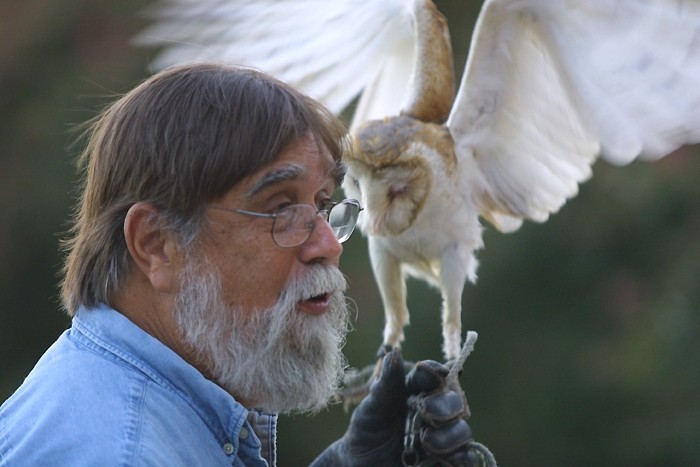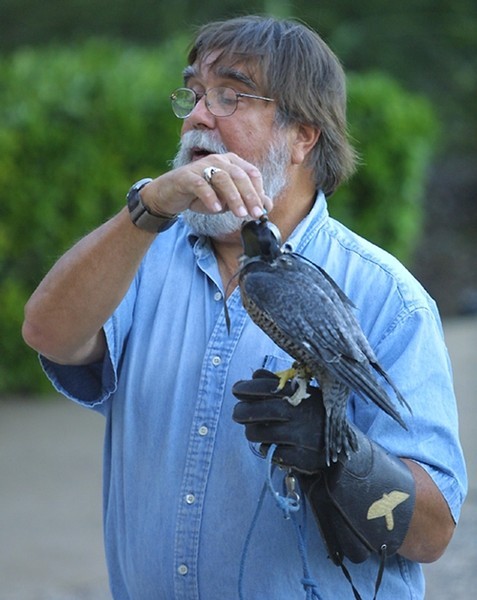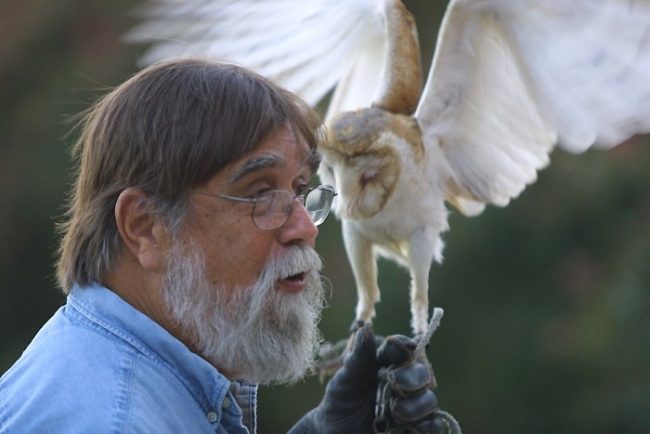
Falconry expert educates on birds of prey
Master Falconer Pierre Bradshaw warned students gathered on thesteps of Dallas Hall to stay quiet and not make large movementswhile the birds were perched on his hand.
“I’m sure ya’ll wouldn’t want to bemistaken for food,” he said.
Bradshaw’s lecture Tuesday evening about the history andtechniques of falconry was part of Professor Bonnie Wheeler’schivalry course.
Bradshaw has been a falconer for 15 years and works with On theWing Again, a non-profit organization in Ferris, Texas, focused onpublic education and the rehabilitation of orphaned, injured andsick birds of all species. Wheeler has been inviting falconers tospeak about the craft on and off for 25 years.
“Bird craft is a kind of art that’s associated withnoble life,” Wheeler said. “We’re interested inthe way even birds become a hierarchy.”
The Book of Saint Albert describes which birds were suitable tobe flown by certain types of people, Bradshaw said. For instance,eagles were at the top of the hierarchy, flown by emperors, whereasprinces could fly falcons genteel. This hierarchy became areflection of the feudal system. Thomas Becket and Henry VIII weretwo noteworthy falconers.
Bradshaw cited allusions to falconry and terms that have beenadopted into everyday language in several works of Shakespeare.
For example, in Much Ado About Nothing, Hero says of Beatrice:”She is too disdainful. I know her spirits are as coy andwild as haggards of the rock.”
The term “haggard” referred to an adult PeregrineFalcon caught in the wild and is now used as the unflatteringinsult “hag.”
Falconry most likely originated in China or Russia as a means ofhunting and survival — getting “something to put in thesoup pot,” Bradshaw said. It later became more of a sportduring the medieval era.
During the Crusades, falconers cross-fertilized with Arab birdsand improved their techniques.
“It’s amazing to see how a tradition that started solong ago is still so much alive today,” said Lynn Wyman,first-year economics, math and medieval studies major.
While falconry is still an art, it is also used for hunting. Thebirds do not retrieve prey — most only weigh around 2 poundsand cannot carry more than half their body weight. Instead, thefalconer will travel with the bird, attempting to rouse the prey.When found, the bird will attack to stun the prey, and the falconerwill help kill and capture it. In this area, falconry birds huntducks. Hawks hit the duck with their balled-up feet, and falconsuse “killing teeth” to puncture the spinal cord.
Bradshaw brought hawks, falcons and owls to show the students,but they could not fly because it is molting season. The birdsBradshaw uses for educational purposes are those that could not belet back into the wild.
One hawk could only see from one eye, and an owl had no tailfeathers from malnutrition during developmental years. Wheelermentioned that the last year a falconer flew one of his birds atSMU, it did not return.

Falconry expert educates on birds of prey










